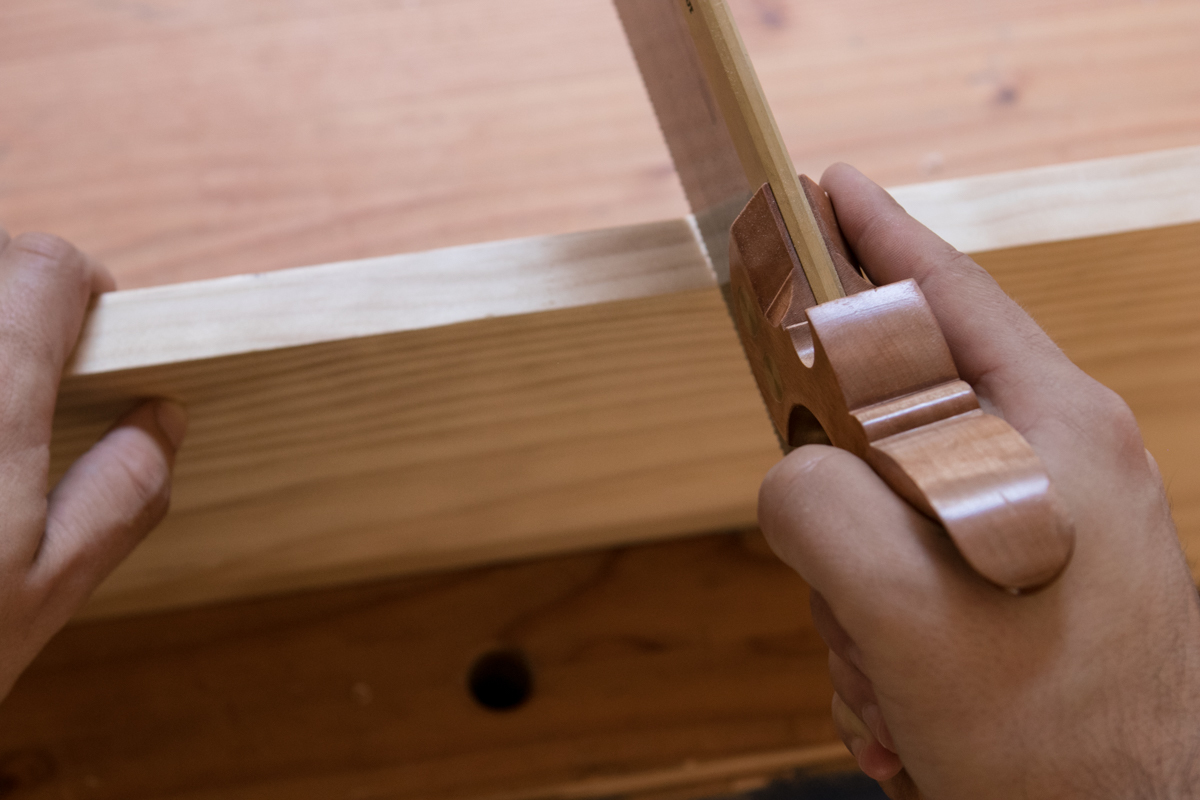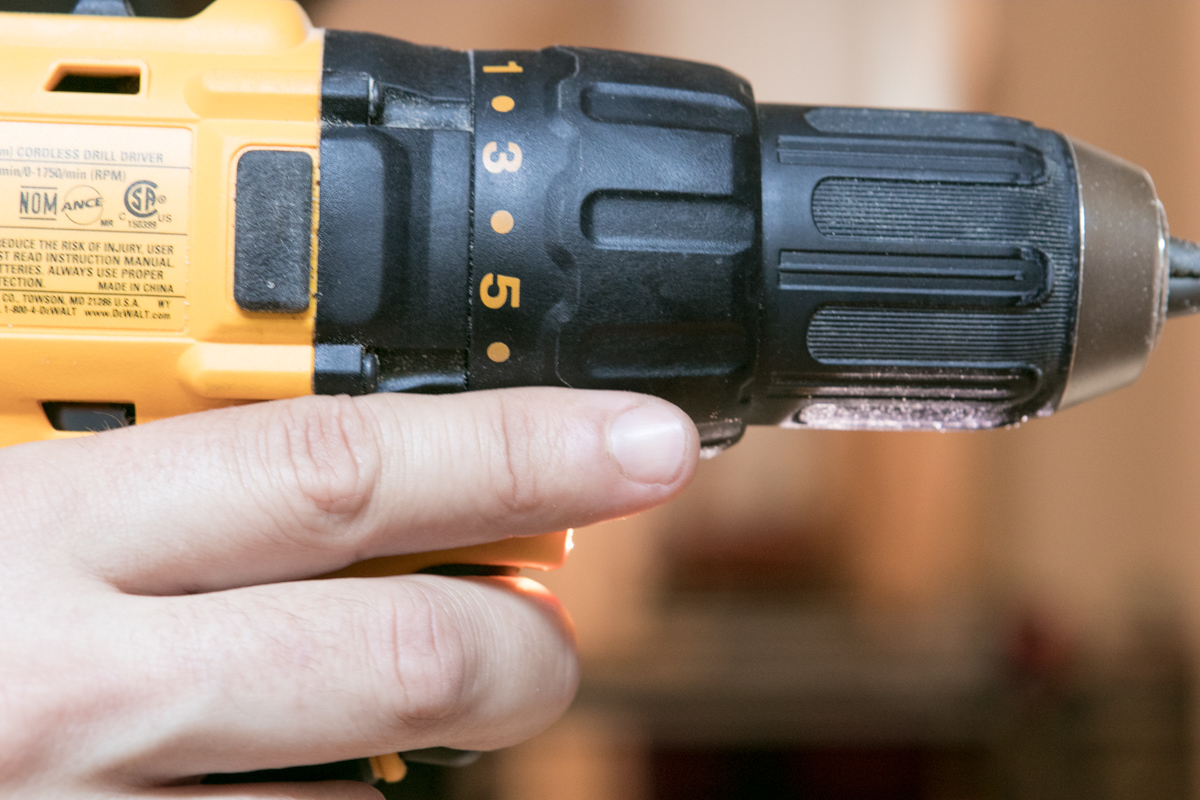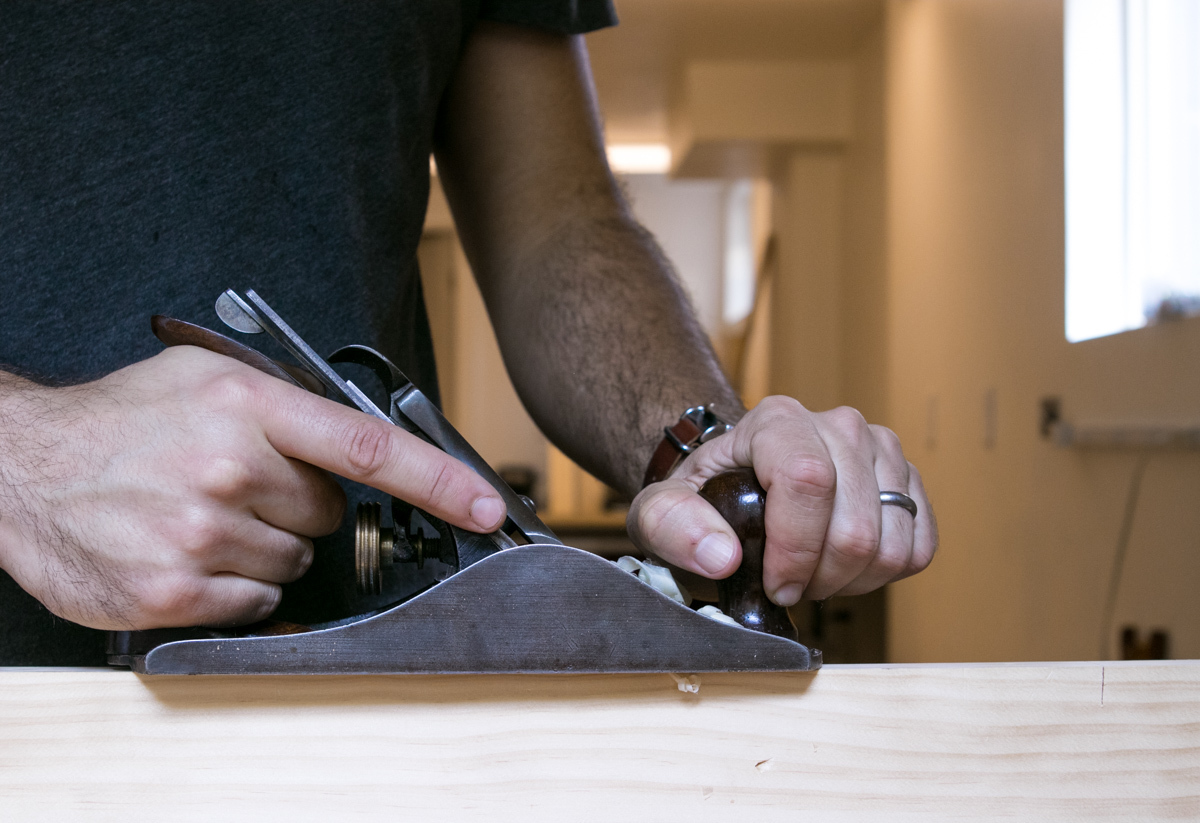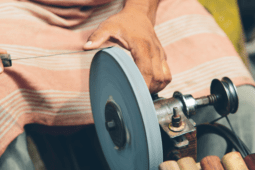How to Drill, Saw, Plane, or Do Almost Anything Straighter

Stationary power tools are often the most full-proof way to do a job. They're anchored to the floor or bench, and come with flat tables and fence systems so you can guarantee your cuts, holes, and other bits of shaping are square and straight.
But, besides being expensive, they're not always the right tool for the job. So, instead we turn to handheld tools, both electric and manual, to get things done. And therein lies the rub – human beings are not machines. Try as we might, we often can't do something with our hands as straight or square as a large stationary tool.
Besides using guides and other accuracy aids, there's a super simple and easy trick you can add to your mental toolbox to help guide the tool to do its best.

The answer? Point your index finger.
This does a few things. First, most tool handles are only sized for a three-finger grip. Trying to get your whole hand wrapped around one can force you to wrack your wrist to change the angle of approach, leading to more inaccuracies.
But more importantly, this is just how human bodies work best. Think of it like a follow through when throwing a baseball: pointing your index finger turns your arm into something that wants to go in the direction you intend it. By extending it in the direction of the action, you'll naturally keep your forearm and your wrist straight.
“Index finger” literally means “pointing finger”, from the same Latin source as the word “indicate.” It's what your body has evolved to do, so take advantage of it. Your projects will turn out better.
 This technique works great on all kinds of tools. It's especially helpful on handles with a pistol-grip, like a hand saw. Extending your index finger allows you push the saw with an action that begins at your shoulder and is transferred through the fulcrum of your elbow to the tool. If you start with a wide, stable stance, and lock your body in position, extending your finger will align your arm to the saw. Then, there's really only one thing that can move: your upper arm. This is the key to good, straight cuts.
This technique works great on all kinds of tools. It's especially helpful on handles with a pistol-grip, like a hand saw. Extending your index finger allows you push the saw with an action that begins at your shoulder and is transferred through the fulcrum of your elbow to the tool. If you start with a wide, stable stance, and lock your body in position, extending your finger will align your arm to the saw. Then, there's really only one thing that can move: your upper arm. This is the key to good, straight cuts.

The index finger technique is in contrast to leading with your thumb. When you let your thumb guide the motion, the natural tendency is to turn your wrist, resulting in a slanted or wobbly cut. Just try it wherever you're reading this: make a Fonzie-like thumbs up postion, and move your arm back and forth. Your wrist will turn and flex as the motion changes. Now point your index finger, and watch the straight path your whole lower arm follows.

I try to use this technique any time I'm guiding something by hand. I will most often depress my cordless drill/driver with my middle finger, allowing me to use the point position with my index finger. Because of the handle design, I can't do it safely with a circular saw, but I try to rely on a clamp-on fence there whenever I can. It's not necessary for chisels, where a pencil grip works better for chopping and a guiding hand for paring.

But anytime you can, try an index-pointing approach. You'll be impressed by what a difference it makes.









